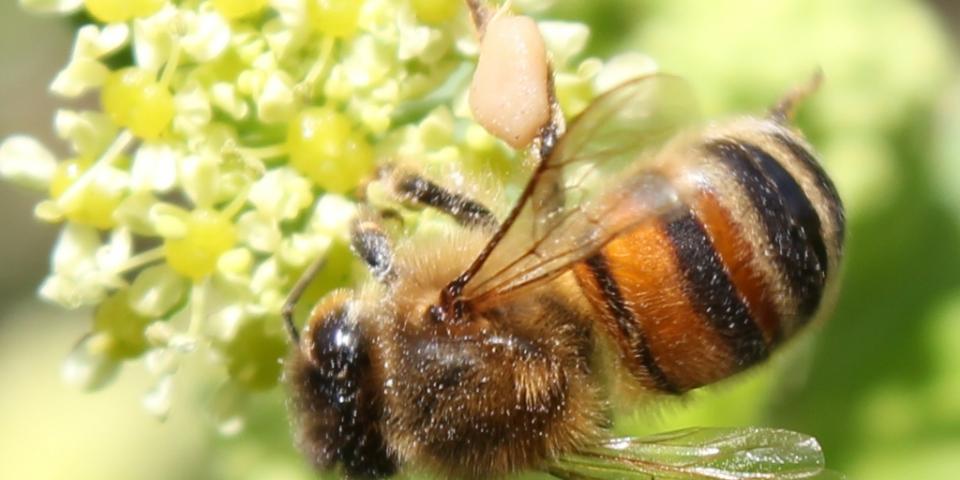- Posted By: beekeeper
- Comments: 0

It's mid-April and have you noticed how green and colourful the landscape has become now that the days are beginning to warm? Here in our patch of East Devon, there is an abundance of a plant that grows along the coastal paths and hedgerows. Over the years, I've never really given it much thought, other than to know when it's growing by the smell - not a pleasant aroma to my nose! The plant I have since found out is called Alexanders (Smyrnium olusatrum), a native plant in Britain that was introduced by the Romans.
Growing quite tall, it's the first greenery of the year which blossoms into green-yellow coloured flowers. Not only did the Romans eat the leaves, stems, roots and buds, but our honey bees and other insects are also attracted to the plant and were busily working the flowers this morning in the sunshine to gather pollen to take back home. As I stood and watched, there were also other honey bees working the dandelions lower down in the hedgerow - clearly demonstrating that honey bees are loyal to a type of flower for as long as it’s in before foraging a different source.
Honey bees continue to amaze me and they are fascinating to watch - whether it be at the entrance of their hive, during inspections or simply slowing down the fast pace of life and enjoying a walk with the dog, stopping to admire the wonders of honey bees going about their daily work all for the good of their colony.
The image used has been published under the terms of a Creative Commons License and is attributed to Jenifer Tucker.
